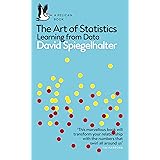Kruskal-Wallis Test in SPSS: A Comprehensive Guide
Kruskal-Wallis Test in SPSS: A Comprehensive Guide, The Kruskal-Wallis test is a powerful non-parametric statistical method used to determine if there are significant differences between the medians of three or more independent groups.
This test is particularly useful when the data does not meet the assumptions necessary for ANOVA, such as normality and homogeneity of variances.
Kruskal-Wallis Test in SPSS
In this article, we will explore how to conduct the Kruskal-Wallis test using SPSS, interpret the results, and understand when to use it in your research.
What is the Kruskal-Wallis Test?
The Kruskal-Wallis test is an extension of the Wilcoxon rank-sum test (Mann-Whitney U test) and is applicable when you have more than two groups.
It ranks all the data points from all groups together, without making any assumptions about the distribution of the data.
The test then compares the average ranks between the groups, which allows researchers to determine if at least one group differs significantly from the others.
Key Features of the Kruskal-Wallis Test
- Non-parametric: Does not assume normal distribution of the data.
- Comparative: Evaluates differences between three or more independent groups.
- Rank-based: Ranks data points in ascending order, making it robust against outliers.
When to Use the Kruskal-Wallis Test
Researchers typically use the Kruskal-Wallis test in the following scenarios:
- Independent Samples: When dealing with different groups that are not related or matched.
- Ordinal Data: Suitable for ordinal data or continuous data that deviate from normality.
- Non-homogeneous Variances: When data variances are unequal across groups.
Practical Example
Suppose a researcher wants to understand how different teaching methods affect student performance. The researcher collects test scores from students taught with three different methods.
Given that the scores are not normally distributed, the Kruskal-Wallis test is an ideal choice to analyze the data.
Conducting the Kruskal-Wallis Test in SPSS
Performing a Kruskal-Wallis test in SPSS is straightforward. Follow these steps:
- Prepare Your Data: Ensure that your data is well-organized with at least one categorical independent variable (the groups) and one dependent variable (the scores).
- Open SPSS: Launch the SPSS software and load your dataset.
- Access the Test:
- Navigate to
Analyze>Nonparametric Tests>Legacy Dialogs>Kruskal-Wallis H.
- Select Variables:
- Move your dependent variable (e.g., test scores) to the “Test Variable List” box.
- Move your independent variable (e.g., teaching methods) to the “Grouping Variable” box and define the groups if prompted.
- Run the Test: Click
OKto perform the test. SPSS will output a variety of statistics, including the Kruskal-Wallis H statistic, degrees of freedom, and significance level (p-value).
Interpreting the Results
Once SPSS generates the output, focus on the following key components:
- Kruskal-Wallis H: This statistic represents the test result.
- Degrees of Freedom: This is calculated as the number of groups minus one.
- Asymp. Sig. (p-value): This value indicates the significance of the results. A p-value less than 0.05 typically suggests that there are significant differences among the group medians.
Decision Rule: If the p-value is below your significance level (commonly set at 0.05), you can conclude that at least one group differs from the others.
Post-hoc Analysis
If the Kruskal-Wallis test reveals significant differences, you may want to conduct a post-hoc analysis to identify which specific groups differ.
Common approaches include Dunn’s test or pairwise comparisons using adjusted significance levels to control for Type I error.
Conclusion
The Kruskal-Wallis test is an essential tool for researchers who need to compare medians across multiple independent groups without the assumptions required by parametric tests.
By using SPSS, you can easily perform this test and obtain meaningful insights from your data.
Whether you’re analyzing educational methods or any other categorical independent variables, mastering the Kruskal-Wallis test will enhance your statistical toolkit and ensure robust scientific conclusions.
Feel free to explore more statistical techniques using SPSS to deepen your understanding and improve your research outcomes!




















